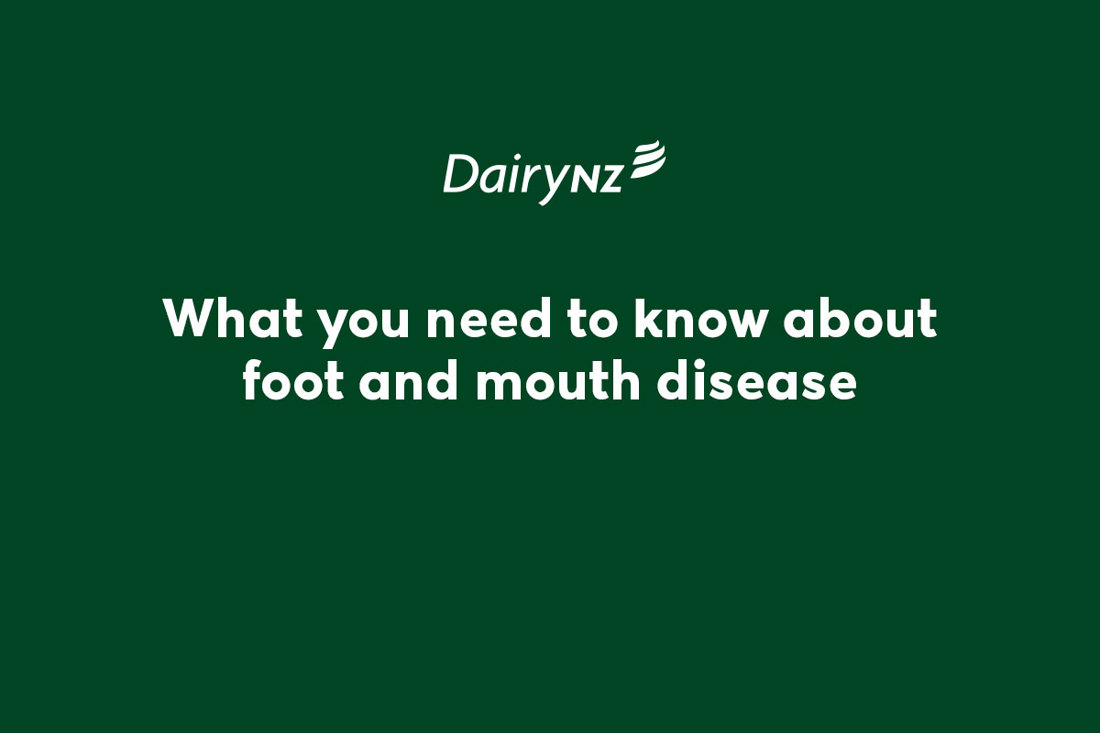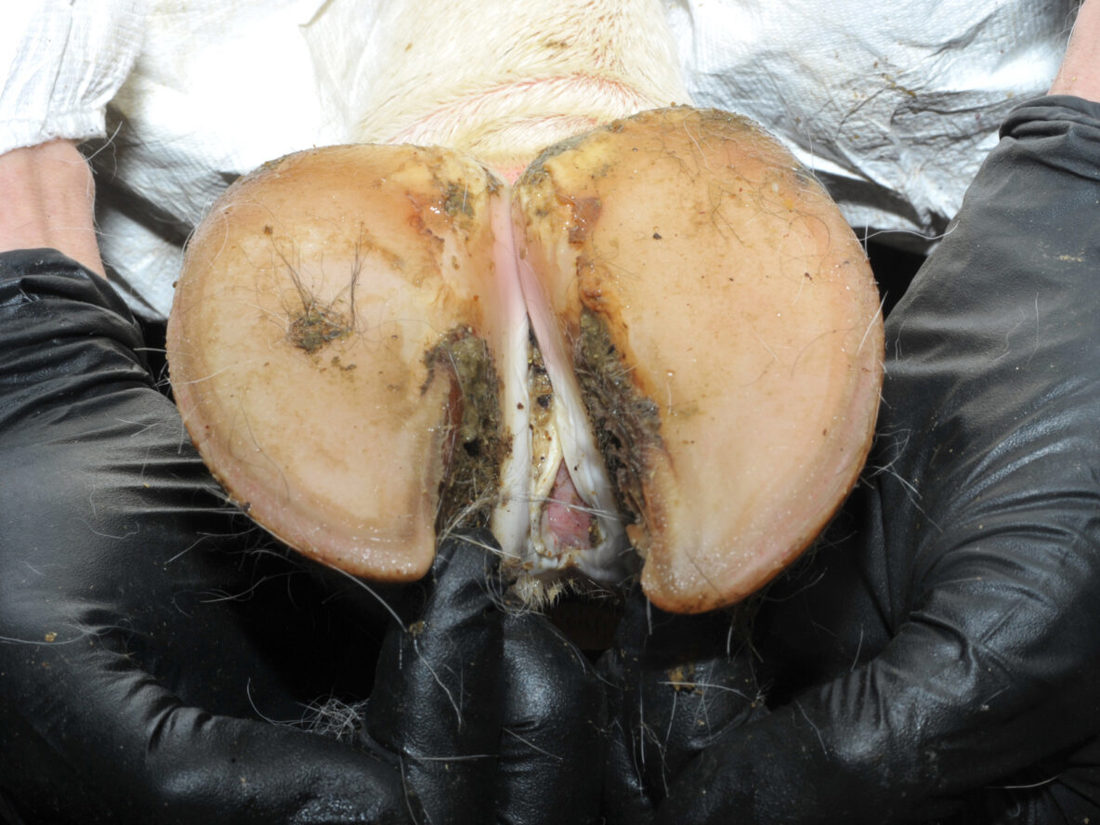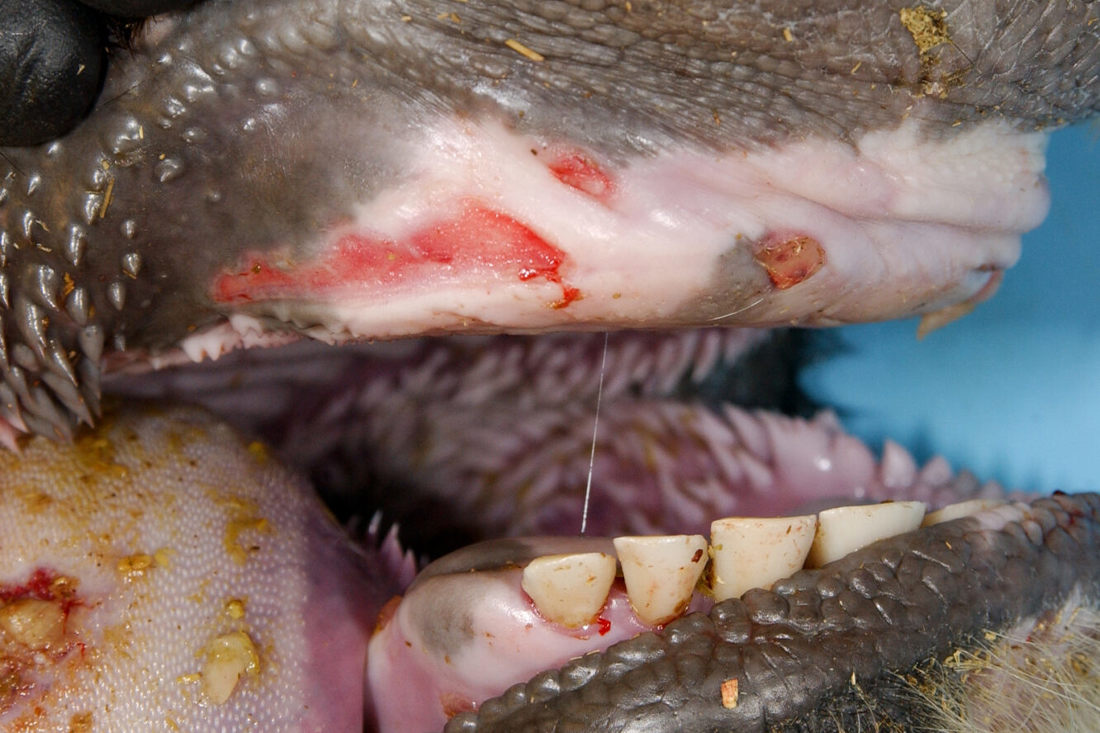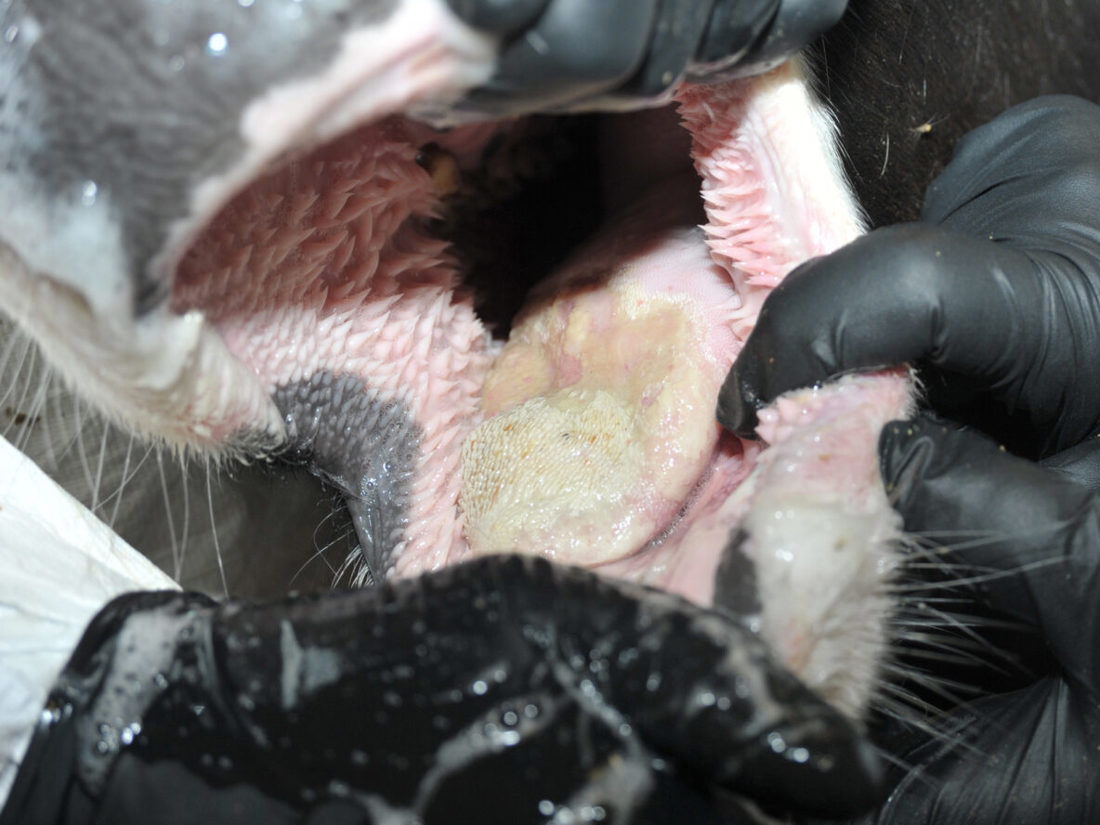Foot and mouth disease
8 min read
Foot and mouth disease (FMD) is a major biosecurity threat to New Zealand. If found here, FMD would have a significant ongoing impact on our agriculture, trade, export and related sectors.
It takes all of us to protect New Zealand from an outbreak of foot and mouth disease. Our best defense is to practise good biosecurity, watch for the signs and respond quickly so we can minimise the risk. This highly contagious disease is easily spread and hard to stop – so prevention and early detection are key.
DairyNZ is working closely with MPI and other industry partners to ensure our policies and procedures are as strong as possible in the event of an outbreak.
Report suspected foot and mouth disease symptoms immediately to your vet or the MPI pest and disease hotline: 0800 80 99 66. (Tip: Save this number in your phone now in case of an outbreak.)
Foot and mouth disease (FMD) is a highly contagious and infectious viral disease that affects cloven-hooved (two-toed) animals such as cows, sheep, goats and pigs. It is an animal health disease with no significant health impact on humans.

Video 3:37 min
Foot and mouth rarely kills adult animals, but as recovery is often slow and infected animals spread the disease rapidly, quarantine (isolating animals away from others) combined with the slaughter of affected stock is often the only realistic means of control.
Infected animals are affected differently and may not show all the symptoms.




Below are some simple steps you can take now to help protect your farm, business and animals.
Why is foot and mouth disease such a threat?
What animals are affected by foot and mouth disease?
Foot and mouth disease (FMD) affects domestic and wild cloven-hoofed (two-toed) animals including cattle, buffalo, sheep, deer, pigs, goats, llamas and alpacas.
Is foot and mouth disease a food safety risk?
Is foot and mouth disease a human health risk?
Can other animals and birds contract foot and mouth disease?
No, foot and mouth disease does not affect other animals such as horses, dogs, cats and birds.
How does foot and mouth disease spread?
Which countries have foot and mouth disease?
Foot and mouth disease (FMD) is endemic in some countries such as parts of central Africa, the Middle East and Asia. Some countries have multiple zones (FMD free, FMD with vaccination or FMD affected e.g., parts of South America).
In May 2022, Indonesia declared an outbreak of FMD after being declared free of the disease for over thirty years. The proximity of this outbreak has heightened the risk to Australia and New Zealand.
What is being done to stop a foot and mouth disease outbreak in New Zealand?
What is the risk of foot and mouth disease coming into New Zealand from Indonesia on Palm Kernel Expeller (PKE) or other imported stock food?
The risk of PKE carrying foot and mouth disease (FMD) is low because of the heat processes used to produce it and the strong import health standards in place for products coming from Indonesia, especially PKE.
Biosecurity NZ experts visited Indonesia to do an on-the-ground check of the palm kernel supply chain and they’ve reported strict FMD requirements are being met by the PKE industry.
Can my herd be vaccinated against foot and mouth disease?
What can farmers do to prevent a foot and mouth disease outbreak?
What do I do if I have animals showing foot and mouth disease symptoms?
What happens if foot and mouth disease (FMD) is confirmed in New Zealand?
What is a national livestock standstill?
What’s the process that MPI would follow if foot and mouth disease is confirmed in New Zealand?
If New Zealand had an outbreak of foot and mouth disease (FMD), MPI would initiate the FMD response plan.
For more detailed information and updates on FMD, visit Biosecurity New Zealand.
Now’s the perfect time to check in, plan, and set up for a strong season. We’ve pulled together smart tips and tools to help you stay ahead all winter long.
Whether you prefer to read, listen, or download handy guides, we’ve got you covered with trusted tools to support your journey every step of the way.
Put our proven strategies and seasonal tools to work. Boost production, support animal health and watch your profits hum.
Tools that are backed by science, shaped by farmers and made for this season.
That’s Summer Smarts.